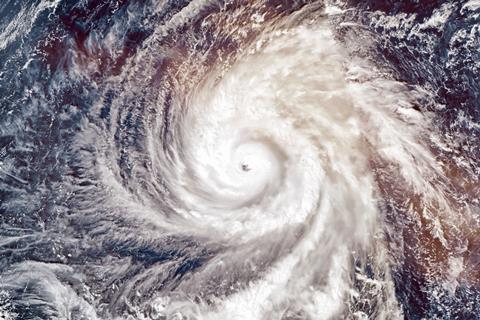A new report on catastrophe risk appetite among global reinsurers has found last year to be the fourth-costliest on record for annual global insured catastrophe losses.
The report, Catastrophe Risk Appetite Varies Among Global Reinsurers, from S&P Global Ratings, states that six years of elevated losses has led to a pricing correction.

Catastrophe risk appetite, the authors write, continues to vary, with more than half of the top 20 global reinsurers maintaining or reducing their natural catastrophe exposures during the January 2023 renewals, despite the improved pricing terms and conditions and rising demand.
S&P writes in the report that last year saw estimate insured losses of $125bn for natural catastrophes, which it said were well above average expectation for the insurance industry. As a result, it wrote, catastrophe budget expectations were exceeded for another year for the top 20 global reinsurers.
This led to more than half of the top 20 global reinsurers maintained or reduced their natural catastrophe exposures during the January 2023 renewals, despite the improved pricing and terms and conditions.
Fewer than half decided and managed to deploy more capital in January 2023, writes the rating agency. However, it does expect this situation to shift this year and into next.
Charles-Marie Delpuech, S&P Global Ratings credit analyst, said in a statement: “We expect the top 20 global reinsurers to deploy more capital toward catastrophe risk in 2023 and 2024, because of continued strong demand from cedents, while higher retrocession cost could lead reinsurers to ceding less of their risk.”
The firm also write that it expects expect the property catastrophe business to contribute about 2.5 percentage points to return on equity (ROE) for the top 20 if natural catastrophe losses remain within the reinsurers’ annual budget.
It added that insured losses so far are tracking above the historical average following severe convective storm losses in the US, the earthquake in Turkey, the cyclone and flood events in New Zealand, floods in Southern and Eastern Europe, wildfires in Hawaii and Southern Europe, and Hurricane Hilary in Mexico and the US.
Any contribution, S&P wrote, to overall ROE was only marginal for the top 20 global reinsurers between 2017 and 2022, based on its estimates. This, it said, showed that the property catastrophe business underperformed in the period.
S&P wrote: “In those six years, losses were at or above budget for the group supporting the need for price corrections. We estimate that the top 20 aggregate ROE would have been on average about 2 percentage points higher every year since 2017 had catastrophe losses been in line with budget expectations.
“In terms of combined (loss and expense) ratio, the top 20 aggregate incurred about 9.5 points of natural catastrophe losses annually over the past six years–about 2.5 points more than budget expectations.”










No comments yet